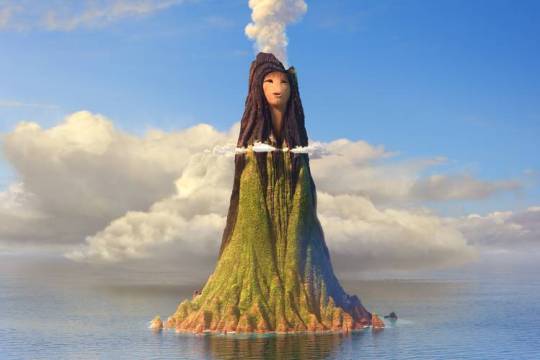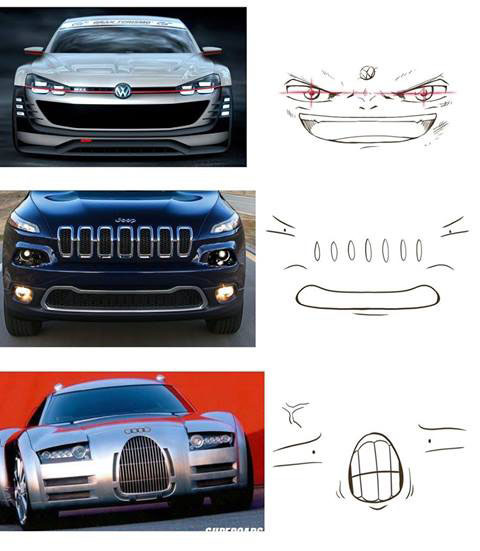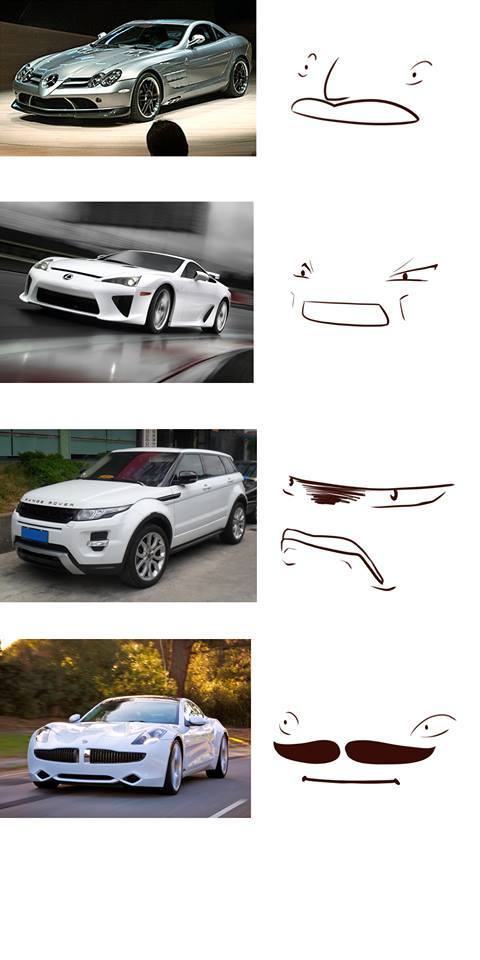Thoughts and musings on whatever I think would be cool to talk about. Basically, a whole lot of nonsense.
Don't wanna be here? Send us removal request.
Text
I wish I knew about this trick.
How to finish that last minute assignment





1M notes
·
View notes
Photo




My friend was walking and found this Godzilla toy in the Trash so he put a shirt on it, named him John, and then took him out to T.G.I. Fridays and then Dinner was on John.
282K notes
·
View notes
Text
So much this.

this is the boy volcano. you can tell it’s a man because the song says so and also it has no tertiary sex characteristics, it just looks like a volcano. it’s a volcano with a human face

this is the girl volcano. you know she’s a girl because she literally has a pretty human face and long human hair and a high voice. if they didn’t make sure you knew she was a woman you might have thought these anthropomorphised volcanoes were Gay
388K notes
·
View notes
Text
Writing Rant
It feels to me like no matter how much you care about something or hard you try to not let people's opinions hurt you as a person, it's impossible to fully close yourself off as a creator. I may write like shit and I may come up with terrible characters sometimes, but I love them. If I didn't love them, why would I spend so much time imagining how they talk, what they feel, and how they act? Why would I invest so much time into considering who they are as people?
When I hear people tell me how much they dislike my characters or can't empathize, it hurts. I can't make it not hurt. They aren't talking about me, and I recognize that. That's not why it hurts. It hurts because they hate something that I love, something that I care deeply about, something that has made me laugh, cry, and long for.
I welcome and relish criticism. I really do. I love hearing feedback on my writing so I can get a better idea of what I need to improve on and how certain elements of my characters and story don't work. No writer is perfect, and not even Hemingway believed his work was perfect.
0 notes
Text
when you hit the point in your writing where you can see parallels between scenes and characters and plots and it’s great because it LOOKS like you’re being really smart and making all these connections like some omniscient puppet master but really you have no control over it and you’re just sitting at your laptop like

36K notes
·
View notes
Video
vine
reblogging this again just to say: if you havent seen this yet you really need to
2M notes
·
View notes
Text
Jupiter Ascending
The name of the Sargorn that is executed and replaced by Greeghan is named Tskalikin. You're welcome.
13 notes
·
View notes
Video
tumblr
Big and Loud | From Cats Don’t Dance (1997)
238K notes
·
View notes
Text
Writing Thoughts
Although I have no idea if this game is going to end up being good or not, I do think it has one of the best passages I've ever written in it. The part that kills me? It's optional content. Infinite Sadness.
1 note
·
View note
Text
Writing Fears
I have this constant worry that someone is going to read my work, realize that I'm a sham, and then out me to the rest of the world. It's not a rational fear, but it's still always on my mind. Writing is hard, and I feel like what I make is me cheating the system by using shortcuts and techniques pulled from other writers.
Don't tell anyone.
0 notes
Text
Same Story, Different Players
I really hate watching creative types explode from their self-defined sense of "failure" as an artist. It sucks even more when they won't listen to compliments or acknowledge the accomplishments they've had so far. Art's hard. If it was easy, everyone would do it. The fact is, it's an eternal battle, and it doesn't stop when you've met your personal definition of success. I wish I could just say something to these artists when they blow up on themselves and hate everything they've done. I wish I could tell them how much I appreciate what they do and the hopes I have for what they might accomplish some day if they keep at it.
I wish I could do so many things, but in the end, it's on them. If they abandon their progress and give up on themselves, then it's on them. The world just becomes a slightly darker place without that artist's unique perspective on the world.
It sucks to see it happen and it sucks you can't stop them.
#rant#art#artists#hatred#fear#don't give up#believe in yourself#equally shitty catchphrase#encouragement
0 notes
Photo










TCR | 2014.12.01 | "In 1977, when I was in 8th grade, I won two tickets from a local radio station to see this new movie Star Wars, two weeks before it came out nationally. I loved it. But at school on Monday I couldn’t explain how everything was different now because nobody had seen it. They thought my Darth Vader impression was just asthma. Then the movie comes out and everybody’s saying it’s the greatest thing ever but I saw it first. I have been a Star Wars fan two weeks longer than any of you."
91K notes
·
View notes
Text
Alinsky's Rules for Radicals
This is important for anyone fighting an uphill battle:
1. “Power is not only what you have, but what the enemy thinks you have.” Power is derived from 2 main sources – money and people. “Have-Nots” must build power from flesh and blood.
2. “Never go outside the expertise of your people.” It results in confusion, fear and retreat. Feeling secure adds to the backbone of anyone.
3.“Whenever possible, go outside the expertise of the enemy.” Look for ways to increase insecurity, anxiety and uncertainty.
4. “Make the enemy live up to its own book of rules.” If the rule is that every letter gets a reply, send 30,000 letters. You can kill them with this because no one can possibly obey all of their own rules.
5.“Ridicule is man’s most potent weapon.” There is no defense. It’s irrational. It’s infuriating. It also works as a key pressure point to force the enemy into concessions.
6.“A good tactic is one your people enjoy.” They’ll keep doing it without urging and come back to do more. They’re doing their thing, and will even suggest better ones.
7. “A tactic that drags on too long becomes a drag.” Don’t become old news.
8. “Keep the pressure on. Never let up.” Keep trying new things to keep the opposition off balance. As the opposition masters one approach, hit them from the flank with something new.
9. “The threat is usually more terrifying than the thing itself.” Imagination and ego can dream up many more consequences than any activist.
10. “If you push a negative hard enough, it will push through and become a positive.” Violence from the other side can win the public to your side because the public sympathizes with the underdog.
11. “The price of a successful attack is a constructive alternative.” Never let the enemy score points because you’re caught without a solution to the problem.
12. “Pick the target, freeze it, personalize it, and polarize it.” Cut off the support network and isolate the target from sympathy. Go after people and not institutions; people hurt faster than institutions
0 notes
Text
The Story Fox: The Best Friend
I've been thinking of starting a Youtube channel dedicated to breaking down storytelling techniques with basic analysis, but I'm still on the fence about it. Here's a transcript of what I'd like to post. If you have any thoughts, leave a note and give me some feedback.
Thanks!
We all know and love the protagonists of our stories. While they could be either weak or strong, this character is who we see the world from, the viewpoint that all the information found in the story is ciphered through. We are meant to empathize with their struggle and understand them on a personal level we create connections to. Sometimes these protagonists are great heroes who can save entire worlds from the forces of evil. Sometimes these protagonists are that great evil, and rather than cheer them on, we instead empathize and understand their point of view despite seeing how flawed they are. Protagonists come in many different flavors, but have you ever stopped to consider why we care about them as much as we do? The answer doesn't come from a list of the protagonist's personality traits, but the conflict they find themselves in. You know what helps drive that conflict? Other characters. In stories, characters are as varied as the protagonists that lead them. Some can be helpful and loveable characters that help the protagonist on their journey while others can be nefarious hindrances that pull the protagonist away from their goals. A protagonist can form close relationships with certain characters throughout their story, and one the most important characters for a protagonist in any story are their group of friends. In this episode, we're going to be talking about one of the most important relationships in a character's life: their best friend.

Consider the role that the best friend plays in the overall progression of a story. When we are introduced to this character, it's often in a scene that shows the two friends enjoying one another's company or simply having a good time. What this establishes for us, as an audience, is a sense of security and sometimes innocence. By showing the best friend's rapport with the main protagonist, this creates an emotional response that comes to represent our own relationships. To put it simply, by showing the best friend and the protagonist enjoying one another's company, it creates a personal connection to our own friendships.
How much better is a terrible situation if you know you have your friend watching your back? How much better do you feel if a friend tells you they want to help you when something terrible has happened? This immediate connection is what we make to a protagonist because of our own personal experiences. We know how great it feels to have friends. We know how great it feels to do something with these friends.
In essence, the best friend represents security for a protagonist. They represent a sense of familiarity and often a solid foundation for the protagonist to place his anxieties on. These characters are patient when they needed to be, and harsh when the protagonist needs someone to whip them into shape.

Take Biggs Darklighter from Star Wars. This is a character we are introduced to moments before the climactic Death Star run, a childhood friend from Luke Skywalker's home world who left to join the Rebel Alliance. Luke makes a passing mention of Biggs in an earlier scene from the movie, but we are no introduced to Biggs until this moment. A deleted scene features Biggs more prominently, but was ultimately cut for the sake of time.
When we meet Biggs, it's just before Luke's most dangerous battle yet. This task looks impossible, but the introduction of Biggs lessens the severity of the conflict because the audience understands that Luke at least has one friend alongside him to watch his back. This point is reinforced by the introduction of Red Leader, Luke's commanding officer. When he introduces himself, he calls into question Luke's piloting ability. What follows this statement is not Luke defending himself but Biggs jumping to his defense. This softens the Captain's demeanor and gives Luke a needed boost of confidence before he takes off. This is the role of the best friend in action, a character who simultaneously boosts the protagonist's confidence while providing a sense of security for both the audience and the protagonist. Biggs has no reason to interject before Luke can defend himself, but because he does, Luke knows he can count his friend to help him when it matters most.

Let's jump forward a bit. After multiple bombing runs have failed to destroy the Death Star, only Luke, Biggs, and a tertiary character named Wedge Antilles are left to finish the job. After his ship sustains a minor blast wound [play clip], Wedge is forced to run, leaving only Luke and Biggs to finish the fight. From this earlier introduction scene, we know that Biggs will protect Luke. What we don't know at this point, however, is how far he's truly willing to go. Biggs' sacrifice is met with a dramatic turn in the music and a cut back to the rebel base. When we return to the Death Star, Luke is visibly shaken. What follows this?
We are now on a countdown timer and Luke is all alone. The death of Biggs marks a turning point in the battle for Luke, a point where he must now confront Vader and the Death Star alone. His sense of security in Biggs' friendship and protection is gone. Biggs is dead.
Anyone who has seen Star Wars knows that Han Solo ultimately saves the day by removing the fighters from Luke's tail, but in those few moments when all Luke has is his trust in the force, the situation appears completely un-winnable. Moments earlier, however, things looked much more optimistic. How did the mood change so dramatically so quickly? The answer is obvious.

Biggs is dead. Biggs represented a sense of familiarity and a sense of security for Luke. The moment he is removed from the equation is the moment Luke must face the darkness alone. This uncertainty and danger mirrors the audience's own perceptions of their day to day life. All of these problems seem much less severe the moment a friend is there to help you contend with your fears and anxieties. When alone, you must confront fear by itself. This is why this particular character archetype is so powerful and why it shows up in so many different stories.
In horror stories, this character is often the most common victim next to the comic relief. In Scream, protagonist Sidney Prescott is being hunted by a masked killer that is stalking the city of Woodsboro. Throughout the film, as Sidney is hounded by reporters and attacked by the masked killer, Tatum is always there to help her friend and provide sanctuary from the rest of the world. Tatum is the character who is constantly trying to console Sidney and acts as a barrier between her and the rest of the world, even going so far as to shelter Sidney in her home after Sidney is attacked by the killer at her own home.
Tatum is a literal safe zone for Sidney. She can vent, she can cry, and she can laugh when Tatum is around. You know what that means, right? Yeah, Tatum's gotta go.

The timing of Tatum's death in Scream is equally as important as the death itself. Until this point, Sidney has always had her main group of friends to count on when it comes to confronting the masked killer. This is why the main high school student characters are together at a party in a house further away from town. Tatum's death occurs just before news of the school principal's death reaches the party. This causes the bulk of the party to go find the body, leaving the main cast of characters (including Sidney) behind. As of right now, the audience and the killer are the only people who know that Tatum has died. With the background characters gone, the mystery of who the killer truly is has been lowered down to the remaining cast of main characters. This begins the climax of the film, the moment when Sidney must confront the killer head on.
So where's Tatum when Sidney needs her most? Tatum's dead, baby. Tatum's dead. Sidney's security zone, the one person she has counted on the entire film, has been killed, leaving Sidney in the midst of potential liars and killers. The events that follow Tatum's death are the most dangerous moments Sidney faces in the entire film. This timing is not a coincidence. Tatum's presence has been a layer of protection for Sidney. With that gone, Sidney must face the horror by herself.

The best friend is a powerful tool of storytelling, one that establishes a mood for its audience. When used correctly, the best friend dictates the tension in a story. Consider Katniss Everdeen's final moments with her best friend Gale in the Hunger Games before Katniss is sent to the capitol. This marks Katniss' exit from the world she knows into an unknown world where danger and death awaits. Beyond the change in scenery and environment, Katniss must leave her best friend behind, the person we have already seen to be a sense of comfort and happiness for Katniss. With her departure, Katniss finds herself in the company of strangers. In the follow up book and movie, Cinna fills this role as Gale fills a different spot. Similarly, Cinna is removed from the equation to make the subsequent danger even more dangerous.

But having said all of that, you know what's worse than losing your best friend? Your best friend betraying you and everything you thought the two of you believed in. As we grow up, we begin to realize that people are complicated. What we assume to know about someone is often completely wrong, and when someone does something to betray our trust, we are emotionally devastated by this fact. These moments in storytelling provide some of the most shocking, heartbreaking, and emotionally devastating moments for this exact reason. We know what being betrayed feels like, and we empathize with a character going through this same emotional process on an even grander scale. In both the Spiderman comics and the movies, Harry Osborn feels a sense of betrayal at Peter Parker's superhero alter-ego due to the connection Spider Man has with his father (The Green Goblin's) death. For Peter, Harry's rage and hatred of Spiderman represents a betrayal in friendship. Here are two characters who feel equally betrayed by someone they considered their best friend, pushing them onto a crash course for conflict. These conflicts are what drive the plot of any story forward and pushes an audience into engagement. Will these two ever be friends again? Will Peter Parker be willing to kill Harry or vice versa? Can Harry forgive Peter? The only way these questions will get answered is for the story to play itself out, for better or for worse.

Disney's liberal adaptation of The Fox and the Hound is based around this very same idea. Though close childhood friends, both animals ultimately feel betrayed by the other. This feeling of resentment and betrayal creates the bulk of the narrative, and unlike most Disney films, the conclusion of the film leaves no hope that these two can ever be friends again. It's a powerful and dramatically dark ending from a company known for their usually light hearted films, but it's an ending that many remember for the emotional resonance it has when compared to the realities of life. Sometimes friendships simply can't reconciled as people grow apart or hurt each other too much. Sometimes it's better to simply let those relationships fall apart than to try to rekindle something that can never come back.
The ultimate takeaway from this brief analysis of the Best Friend character's role in storytelling is that the Best Friend is one of most powerful tools that can be used by a storyteller. This is a character that has a personal connection with the protagonist, and because of this connection, the audience will also feel a strong connection. These are just some of the most basic ways that storytellers use the best friend in the context of a story, but these portrayals are some of the most common.
If you're trying to come up with your own characters, try to figure out how your protagonist's best friend functions in that character's life. Does the protagonist's best friend always have a solution to the protagonist's problem? Does your protagonist rely on this best friend for strength when he feels he cannot fight a problem alone? Or maybe this best friend has always harbored a grudge for something that protagonist has no control over. These are all ideas that describe potential avenues for conflict. If your protagonist relies on his best friend to solve his problems for him, what happens to your protagonist when his best friend is kidnapped or even killed? If he needs his friend for emotional support, what happens when he is killed? If the friend has a grudge, maybe that grudge is what drives the two friends apart and creates the climax of the story.

I don't have the answers for your story, but I'm sure you know what I'm getting at. There are countless ways to use the best friend in your stories, and if you're thinking about it, try reading or watching some stories while focusing on this character. You might learn something I didn't have time to talk about in this episode! If I can get you to do that, then my work here is done.
See you next time!
0 notes







